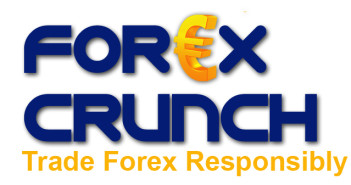We’ll soon get an answer to the question above. FXCM filed for an IPO in New York’s stock exchange, for a value of $975 million to 1.1 billion dollars. When the stock will start trading, it may serve as an interesting barometer for the forex industry. The prospectus towards the offering of stocks already reveals interesting information.
FXCM is about to make an Initial Public Offering for about 15 million out of 75 million shares. The price of one share will range between $13 to $15. A successful IPO will set the initial value at around $1 billion. This is more than originally estimated – $676 million. From that moment onwards, the NYSE market will determine the price.
FXCM is one of the largest US brokers. It is very active in Asia and recently acquired the British ODL brokerage, seeking expansion in Europe. The $200 million that it’s expected to raise until the end of November will give a boost to its business.
So, with this broker trading on Wall Street, the stock price can reflect the state of the industry – the impact of new regulation proposals will be reflected in the stock – we’ll see which CFTC rules are meaningful and which aren’t. We’ll also get to see how the quarterly profitability reports that are required by the CFTC impact the stock price. Is a high profitability rate favorable for the broker, or not?
For market makers, the answer is that a lower profitability rate means that the forex trader is “burned†faster and that the broker made money more quickly. For ECN / STP / NDD brokers like FXCM, the answer is expected to be the opposite – successful traders mean more trades – more profits from spreads.
And speaking about market makers vs. ECN / STP / NDD models, the prospectus contains FXCM’s opinion on this. It used to be a market maker (principal broker) and turned into a No Dealing Desk (agency) broker. In the prospectus, highlighted by FT Alpahville, they explain the inherent problem:
Our agency model is fundamental to our core business philosophy because we believe that it aligns our interests with those of our customers, reduces our risks and provides distinct advantages over the principal model used by the majority of retail FX brokers. In the principal model, the retail FX broker sets the price it presents to the customer and may maintain its trading position if it believes the price may move in its favor and against the customer. We believe this creates an inherent conflict between the interests of the customer and those of the principal model broker. Principal model brokers’ revenues typically consist primarily of trading gains or losses, and are more affected by market volatility than those of brokers utilizing the agency model.
Izabella Kaminska at Alphaville makes a good point that it “takes one to know one†– in this case, very closely – they switched models so they know what the interest of the broker is when it is a market maker…
But, I do believe that FXCM’s current model is the better way for forex brokers. The IPO will add to their transparency and will hopefully impact others as well. And as aforementioned, tracking the share price will be quite interesting.
Will we see more IPOs?
Michael Greenberg sheds light on another interesting thing in the document – that “current investors will suffer immediate and substantial dilutionâ€.
Full disclosure: FXCM is an advertiser on Forex Crunch



